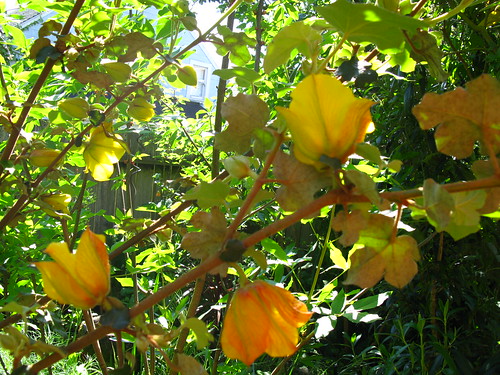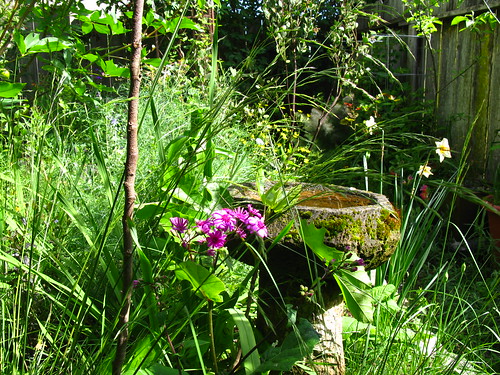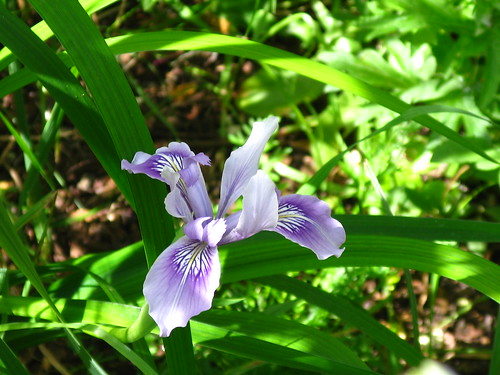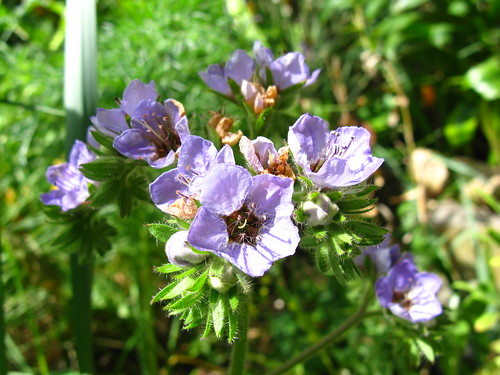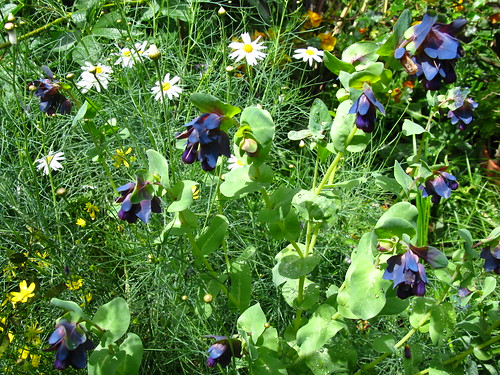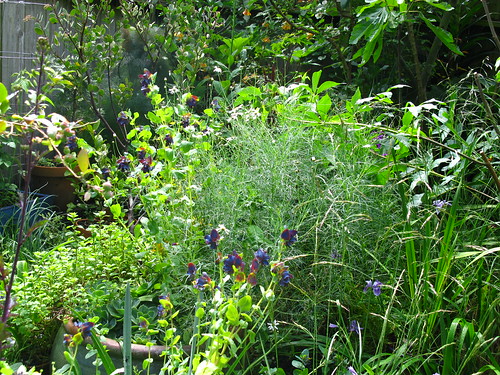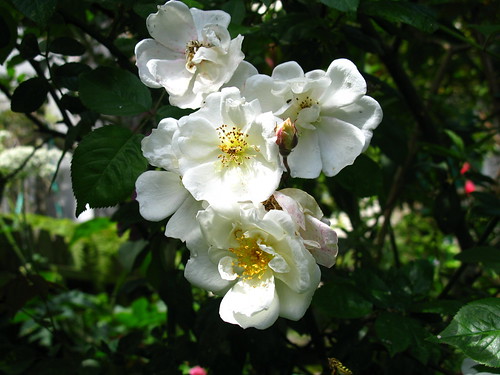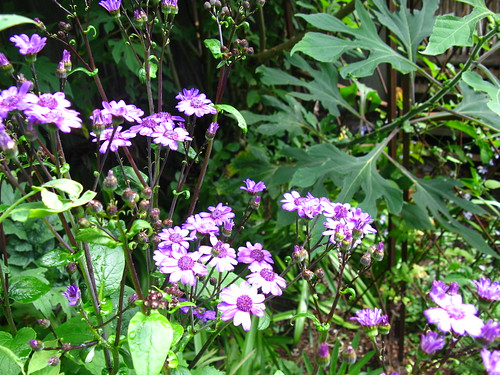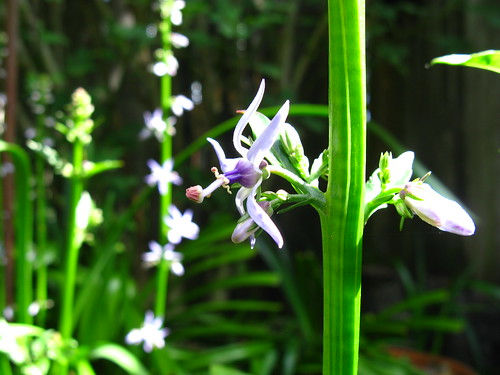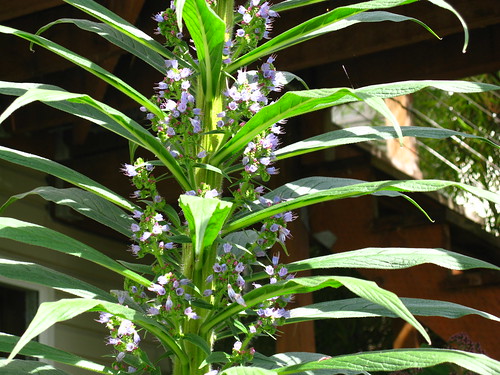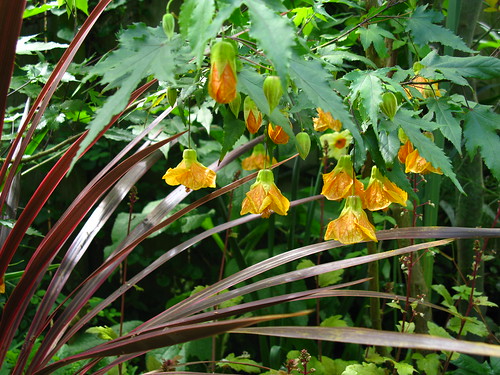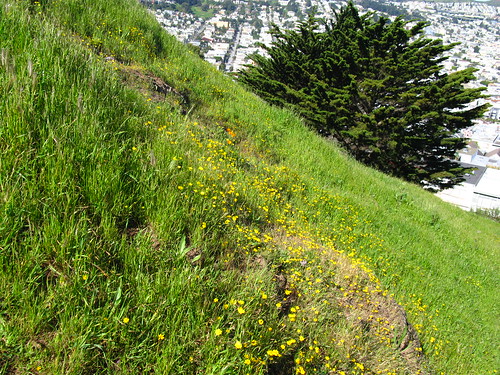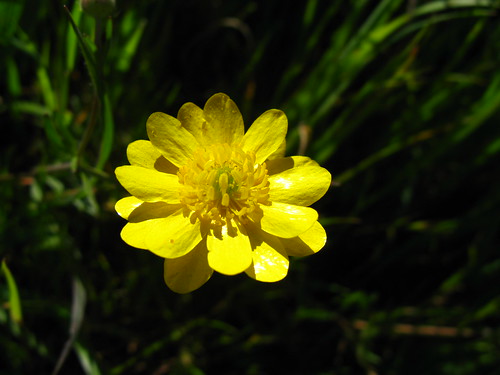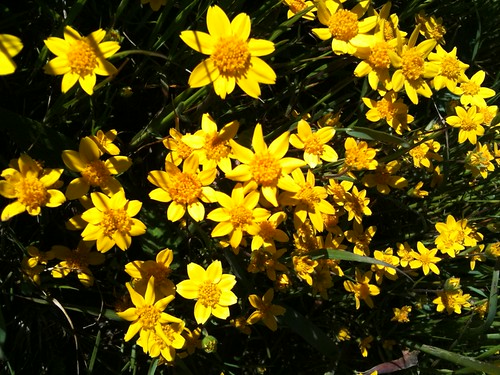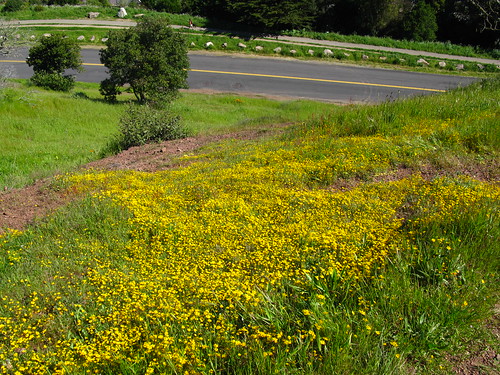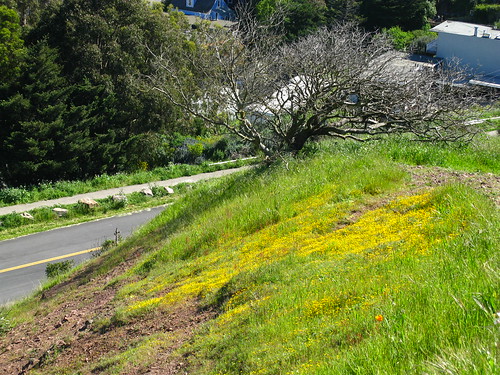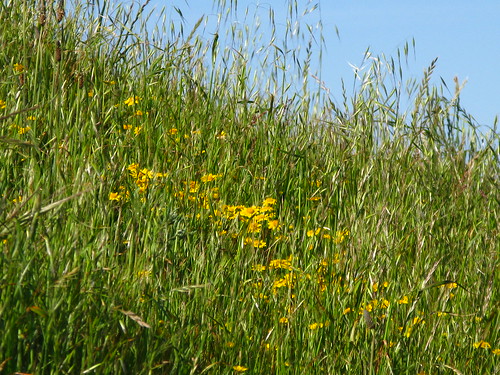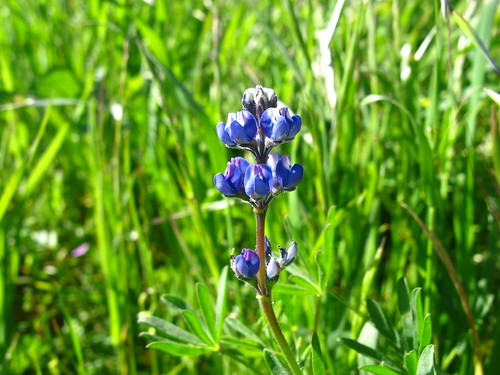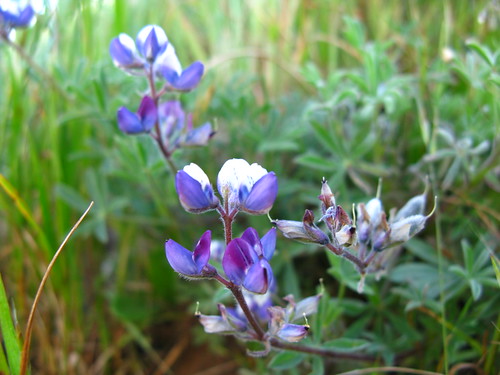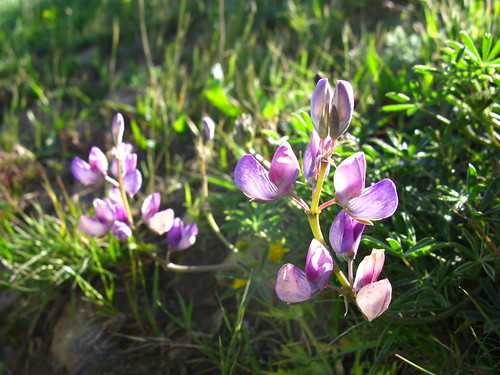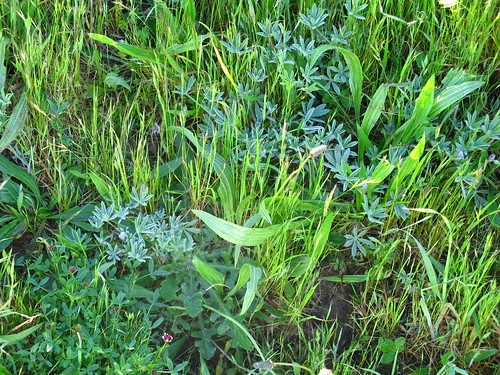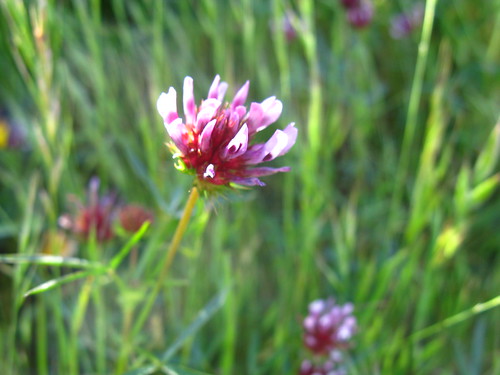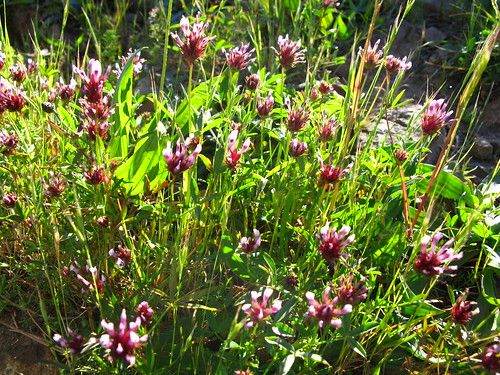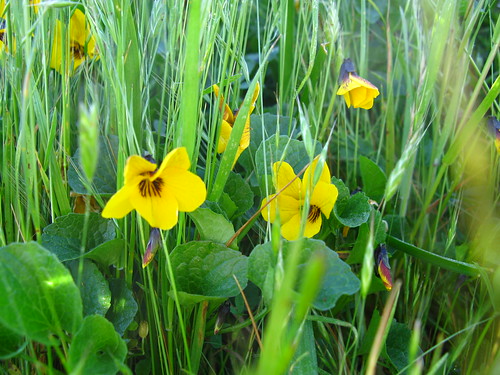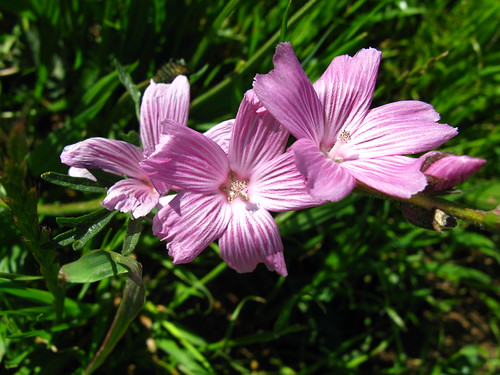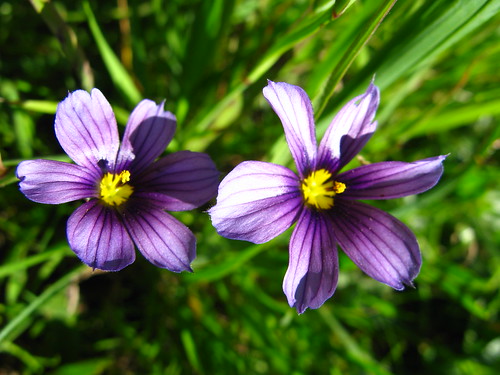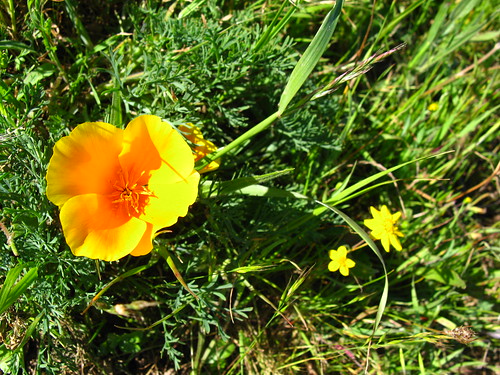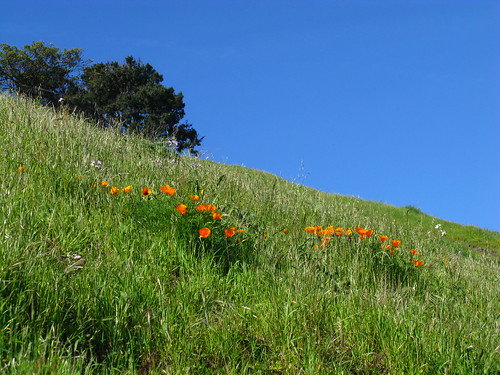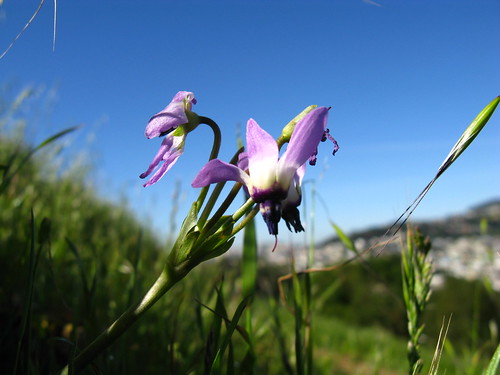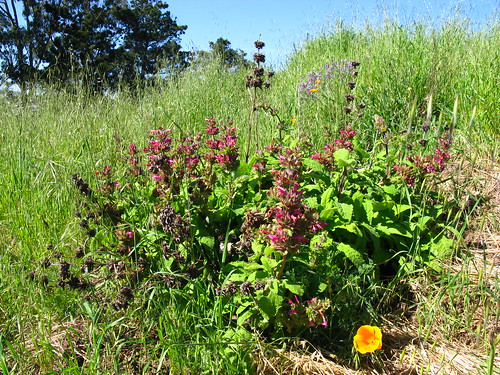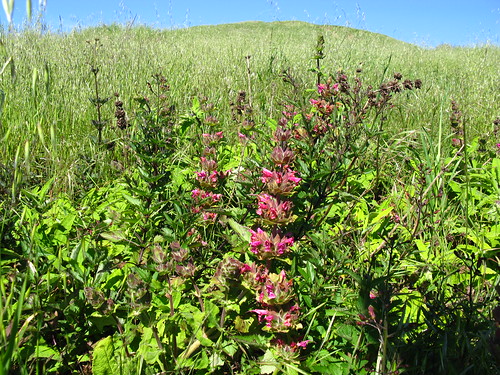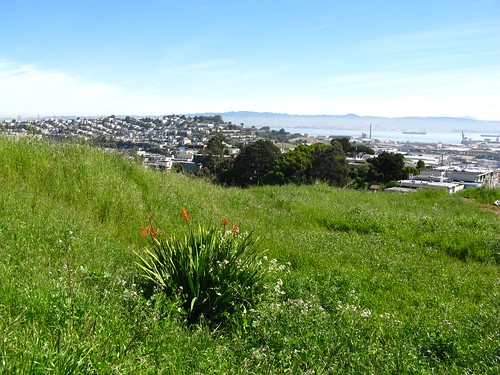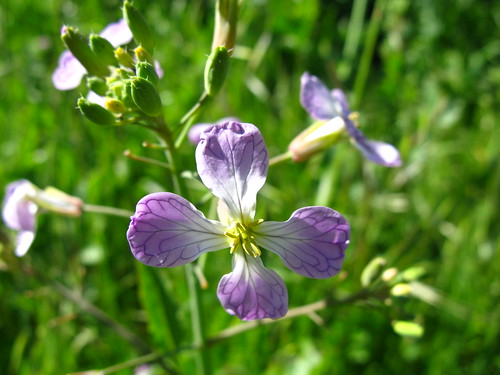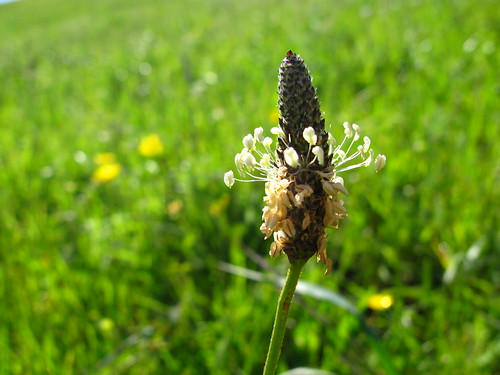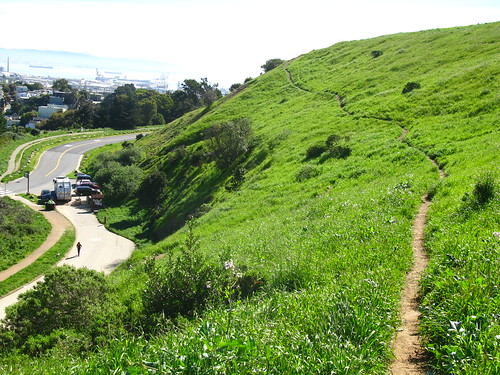I need to finish the roadtrip blog posting, but it's already getting so late. Maybe I'll just do one more post to wrap it up. In the meantime, I visited my garden... Spring is here but I don't have any wildflowers this year which is a damn shame. Spring without wildflowers in the garden feels awful. But with school, I just didn't have time to edit the garden to make room, or get seeds started.
Anyway...I think the closest thing I have to wildflowers might be some Camassia, a grassland prairie bulb. This particular bulb is three or four years old and very reliable in the garden. If/when we move, I'm digging it up and taking it with us.
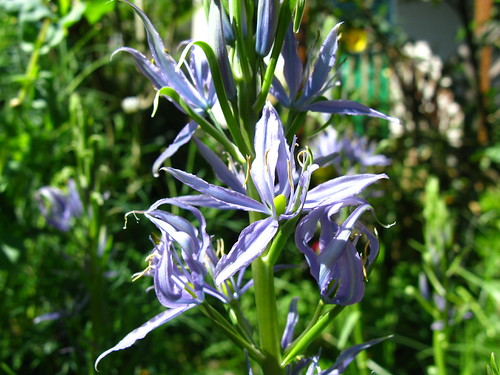 Heracleum lanatum
Heracleum lanatum is another wild plant, and one of the heaviest self-sowers in my garden. I have to be careful where I allow volunteers to remain because the leaves get BIG. If you want a mini-
Gunnera for a couple months every spring, welcome Heracleum into your garden.
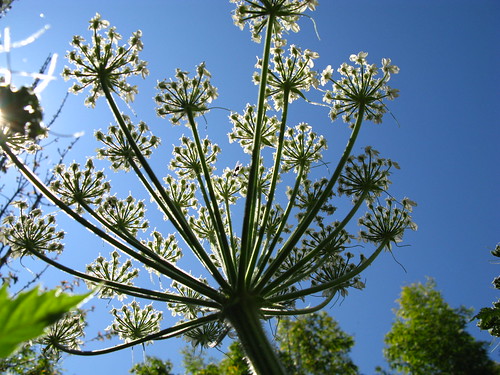
My love affair with California-native perennial bunchgrasses might be waning. They are also heavy self-sowers, and I find them hard to identify and distinguish, even from weeds. Maybe the mistake was in planting too many different kinds. I think my favorite is California fescue (
Festuca californica), but it's a little bit on the large side for the small city garden. Good thing I'm also fond of the smaller
Nassella cernua which I also have a few of. If I were starting over now, I might use only
Nassella cernua (which you can get seed for from
Seedhunt, or buy already growing 4-inch pots from
Annie's. But I am also interested in the exotic sedges like
Carex testacea and
Uncinia uncinata (the redder one in this picture):
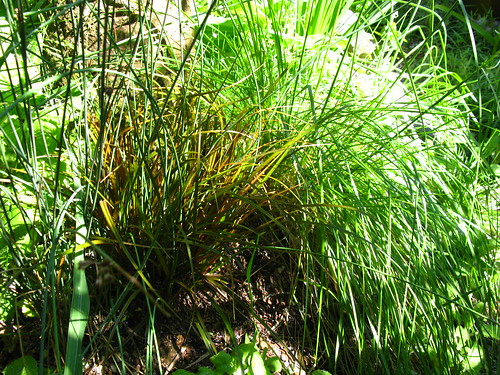
Someday, I'll have a large monocots-only bed with those plants and a few hopefully well-placed cordyline, phormium, and beschorneria.
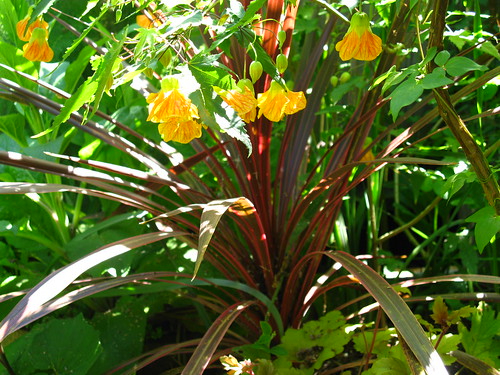
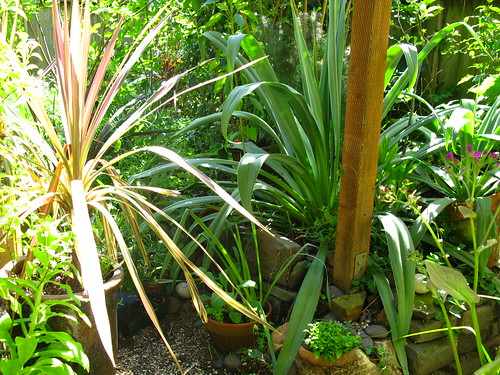
I also want a tree fern glen...
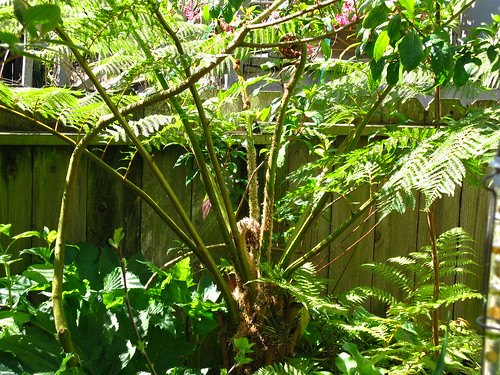
inter-planted with fancy fuchsias.
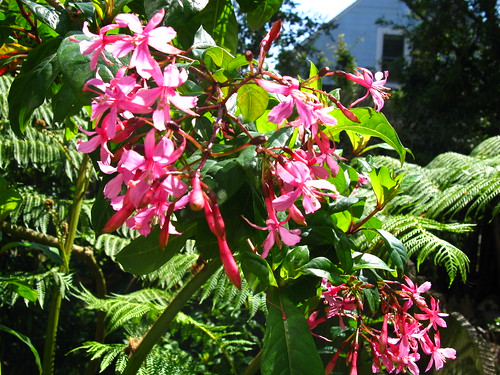
That's not too much to ask is it?
The
Echium pininana (seen here, with
Fuchsia boliviana) is in bud and soon to flower. The flower buds (you can't see them here) look red which is interesting because the usual flowers are blue. They could still open blue of course. Or be red. Echium species can be variable and who knows what might happen.
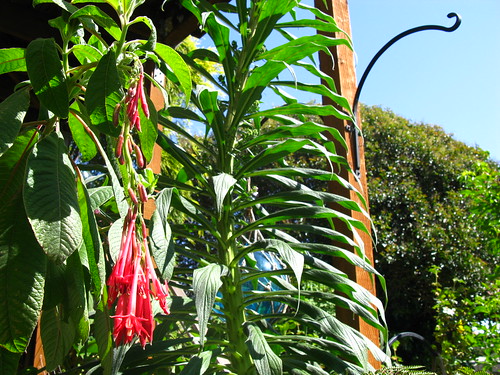
Do you do hanging baskets? So hard to water. I tried a few different times with different plants. Nothing really worked. Maybe in California hanging baskets belong in the shade garden, with tuberous begonias or something.
I've resorted to hanging glass instead.

A few freesia left... some came back from last year which is nice. These naturalize well for my friend on the peninsula. Maybe if I did less gardening they would naturalize for me too. I think they get dug up and/or buried too deeply with my constant puttering. (Not so constant this year tho'.)
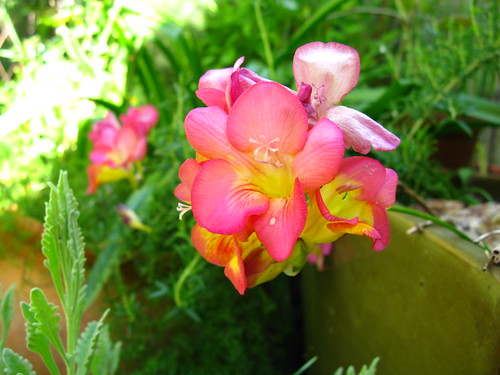
The Fremontia is flowering. This plant has decided to do its own thing, totally disregarding the plans I had for it and the role in the garden I intended it to play. All I can do is prune it now. It's kind of cool after the first rush of flowers has faded to cut them all off and let them lie where they fall. They hang around for a couple days; it's a neat effect.
